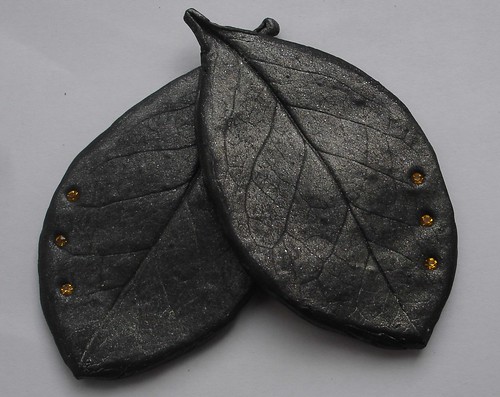I'm sure many of you have probably found yourself in the same situation as me, but for those out there who are yet to experience the exasperation of sterling silver - that turns out not to actually be sterling silver I'd like to share a few little tips. Whether you are given something by a family member or friend, or buy from a seller you are not 100% sure of it's always worth making a few quick and easy checks especially if you are planning on selling your items on.
1. Not all items described or even stamped as Sterling silver 925 are silver, and sometimes items will contain parts that are silver and parts that aren't! Sometimes this is a deliberate ploy to part you from more money, sometimes just a genuine mistake, but always annoying. I once found that only the tag on a necklace which I had always believed was sterling actually was - all the other parts were very magnetic!
2. Check the items as soon as possible - I just checked some items that I've had in my stash for over 5 years only to find out they weren't SS and I had paid around £8 for something that was worth no more than a couple of pounds at best. If back then I had carried out a simple test I would have been able to ask for a refund. Now I'll just have to put them to a different use.
3. Get out a strong magnet - sterling silver is not magnetic - if your items leap to the magnet like mine did they aren't SS. Not all base metals are magnetic, so while the magnet test will tell you items they definitely aren't SS, you may still want to check further if you are still suspicious.
3b. Be careful if you try to use a magnet to check clasps! The springs in lobster and bolt ring clasps can't be made from sterling silver as it is a soft metal, and a strong magnet will often attract sterling silver clasps. When carefully trying it against the loop parts of these claps I have seen that they aren't magnetic, but on such small findings, it's not a good testing method!
4. Still not sure, not got a magnet handy? Take the sniff test! Wash your hands with a mild soap, so they are nice and clean and dry them thoroughly. Hold the silver items between your palms till your hands have thoroughly warmed the metal up, then sniff your palms. If they smell distinctly like copper coins it is very likely that your items are actually silver plated on a copper base.
5. Silver testing kits. If you are buying a larger item, or likely to be buying a lot of SS you may want to consider investing in a silver testing kit, however people have differing success reading the results and you have to be careful not to damage the items you are testing. Some jewellers may also offer this service, but generally for jewellery findings and beads this isn't a very practical solution.
I'm sure there are there are other good tips out there to help in identifying items that aren't actually sterling silver (that don't involve damaging the item to check), so if you have a tip to share, please do post a comment to let us all know.
Happy beading










